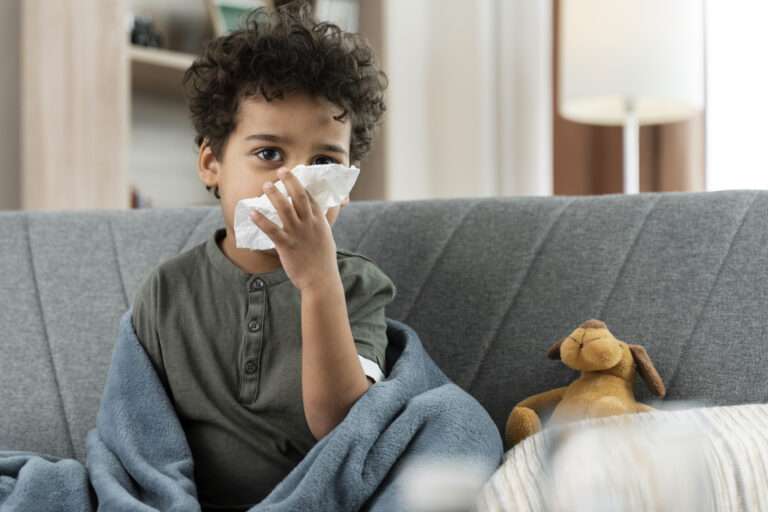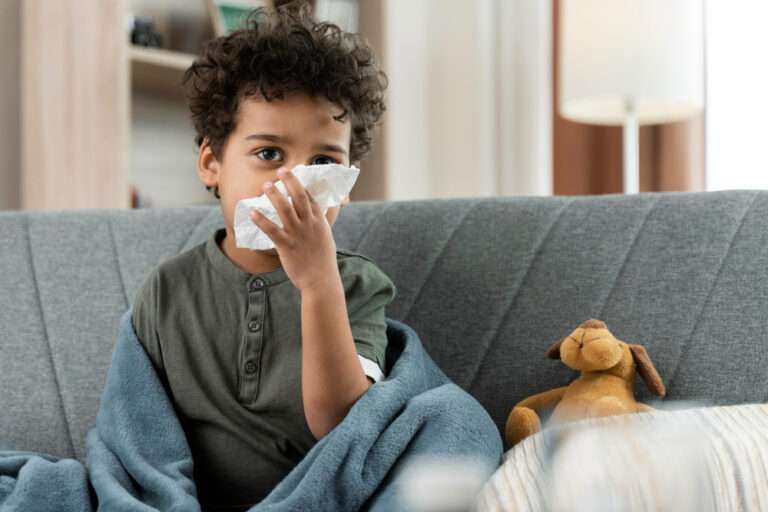Impetigo in children
Impetigo is a common skin infection that primarily affects children, although it can occur in individuals of any age. It is usually caused by bacteria, most commonly Streptococcus pyogenes (group A Streptococcus) and Staphylococcus aureus. Here are key points to understand about impetigo in children:
Types of Impetigo:
- There are two main types of impetigo:
- Nonbullous Impetigo: This is the most common form and is characterized by the formation of small, red sores or blisters that burst and ooze fluid, which then forms a honey-colored crust.
- Bullous Impetigo: This less common form is characterized by larger, fluid-filled blisters that may not rupture as easily as those in nonbullous impetigo.
Transmission:
- Impetigo is highly contagious and can spread through direct skin-to-skin contact or by touching contaminated items such as towels, clothing, or toys.
Symptoms:
- Common symptoms of impetigo include:
- Red sores or blisters.
- Oozing fluid.
- Formation of a yellowish-brown crust.
- Itching or discomfort.
- Impetigo lesions often appear on the face, around the mouth, or on exposed body parts.
Diagnosis:
- Impetigo is typically diagnosed based on its characteristic appearance. In some cases, a bacterial culture may be performed to identify the specific bacteria causing the infection.
Treatment:
- Treatment of impetigo often involves antibiotics, which can be applied topically (as a cream or ointment) or taken orally, depending on the severity and extent of the infection.
- Good hygiene practices, such as keeping the affected area clean and avoiding scratching, can help prevent the spread of impetigo.
- It’s important to complete the full course of antibiotics as prescribed.
Prevention:
- To reduce the risk of impetigo, encourage children to:
- Wash their hands regularly.
- Avoid sharing personal items like towels and clothing.
- Keep their fingernails clean and short to minimize scratching.
- Cover any open wounds or sores with clean bandages.
Contagious Period:
- Impetigo is contagious until the sores or blisters have healed and formed a crust, or until 24-48 hours after starting antibiotic treatment.
Complications:
- Impetigo is usually a mild and self-limiting infection, but complications can occur, including the spread of the infection to other areas of the body or the development of cellulitis, a deeper skin infection.
Recurrence:
- Some children may experience recurrent episodes of impetigo, especially if they are in close contact with others who have the infection.
Impetigo is a common and treatable skin infection in children. With proper treatment and hygiene measures, most cases of impetigo resolve without complications. If a child has symptoms of impetigo, it’s important to consult a healthcare provider for a proper diagnosis and appropriate treatment.
------------From our Sponsors------------









